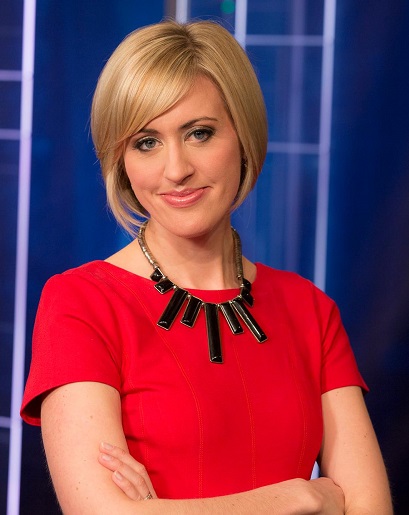
For a year, awards-winning reporter and photojournalist Lindsey Seavert and Ben Garvin of KARE11 in Minneapolis, Minnesota, were embedded in the challenged Lucy Laney Elementary School. They recorded the realities children of color face in that school located in the gritty poverty–stricken area of North Minneapolis for their local station.
It started as a news series called Lessons from Lucy Laney. And it was about two stories a month. We quickly realized this is so much more than that. This should be a documentary. Lindsey Seavert
Ultimately their series became the documentary Love Them First in which Lindsey and Ben showcased the inspirational Lucy Laney Principal Mauri Melander Friestleben and her students tackling and determined to beat the perennial low test scores and performance and turn the school around.
I caught up with the busy Lindsey Seavert to find out more about her, Mauri and what was behind the gutsy and powerful story that grew into the award-winning documentary Love Them First…
EYE: How did your involvement with Love Them First begin?
LINDSEY: I was covering the vigil for the two-year-old boy who died on the corner of Lucy Laney Elementary. Mauri, Lisa, the assistant principal, and the staff members had led every child out of the school building one by one. Each one was holding a carnation and a handwritten note for the boy who died. They formed this big, quiet peace vigil.
It was largely silent, except for the voice of Mauri, who spoke to the media, “This can’t be normalized in our community. And it is. And if we don’t talk about it here and now and if we don’t raise the alarm, no one will.”
This followed a string of violent incidences and the kids were scared.
TWE: What struck you about the way Mauri handled this difficult situation?
LINDSEY: She said, “A car drove by and a man pulled out a gun. Unfortunately, a bullet came out of the gun and went through little Vontaze’s heart and he died.” She was so sensitive but so honest.
I was just struck by her honesty, but also her willingness to fight for her kids, be this disruptor and protector in a way that I hadn’t seen before.
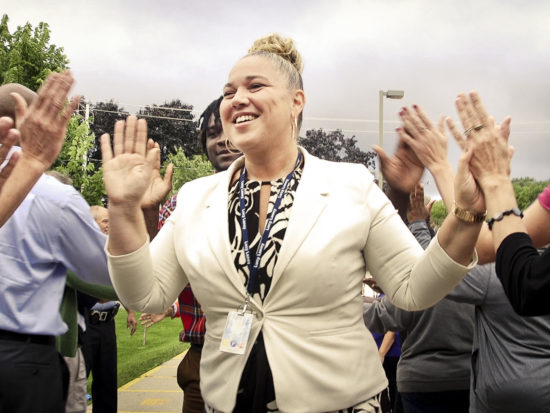
Shortly after I filed the story, I went through a difficult pregnancy and was home with my preemie for about six months. Mauri and the kids stuck in my head. I decided that when I went back to work I was going to knock on that door and listen to that little voice in my heart and see what story was inside that school.
EYE: How did you come to join forces with photojournalist Ben Garvin and ultimately make this film?
LINDSEY: I worked a lot with Ben Garvin who had his own experience related to the protest in the neighborhood after the police officer involved shooting.
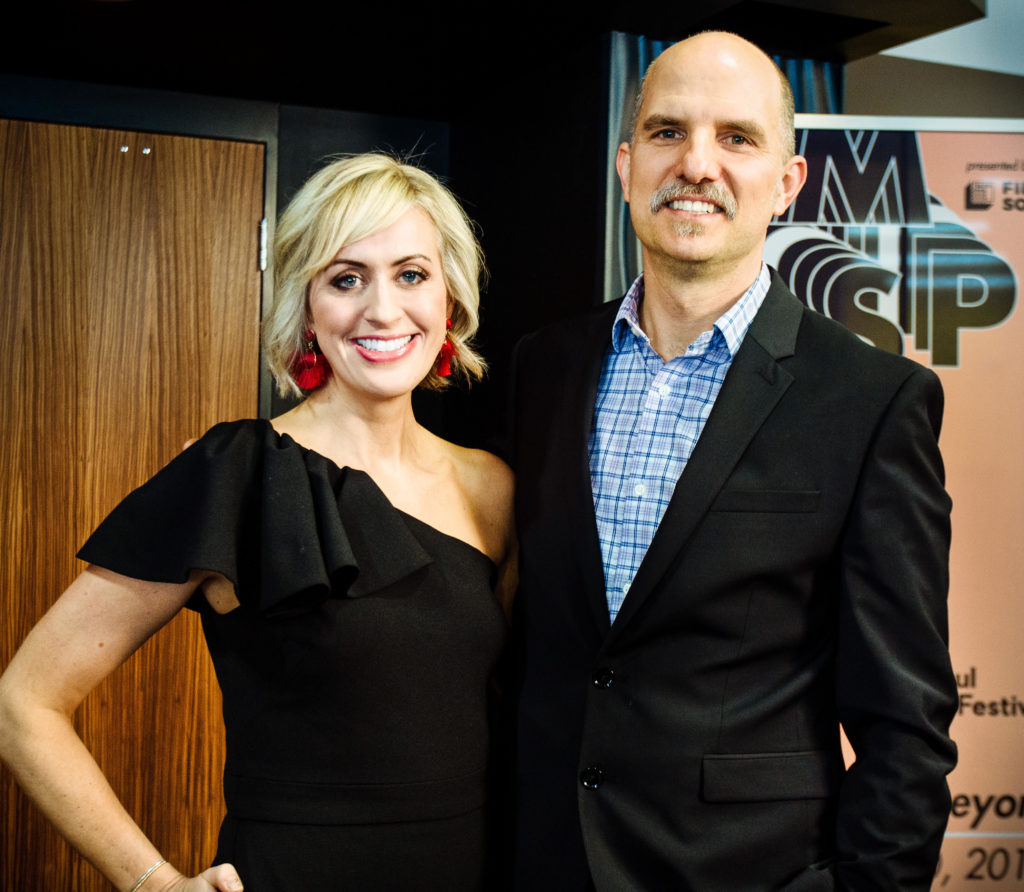
Photo: Carly Danek
He was in Lucy Laney to record a story on Thanksgiving and why kids were thankful. An announcement came over the loudspeaker that day and it was Mauri talking to the kids again in that wonderful, sensitive honesty she has about what was happening in the neighborhood and why kids were seeing helicopters, fires and walking through scary protests on the way to school.
He had recorded that announcement because he thought, Wow, this is amazing. We were driving around one day on assignment and we couldn’t stop talking about our own experiences in the neighborhood and in the school.
EYE: Why did you chose Mauri’s voice rather than your own for the narration?
LINDSEY: I’m struck by her unflinching strength, her faith and love for her students. She also has a preacher like quality to her. When she speaks, you listen and you go on a journey and are transformed. She has this quote that says, “If you’re in this work, you’re in it to change the world.”
And you can see in her eyes and in her heart that is at the forefront of what she does every day. She will not stop until she changes the world for her kids.
At the beginning of the film, you see a scene on the first day of school where the community lines up, Mauri hugs every child and they get high fives. She started that five or six years ago based off of a similar event in Chicago, modeled after the Million Father March.
I think vulnerability is her superpower and she lets her guard down, but her strength is so apparent and inspiring.
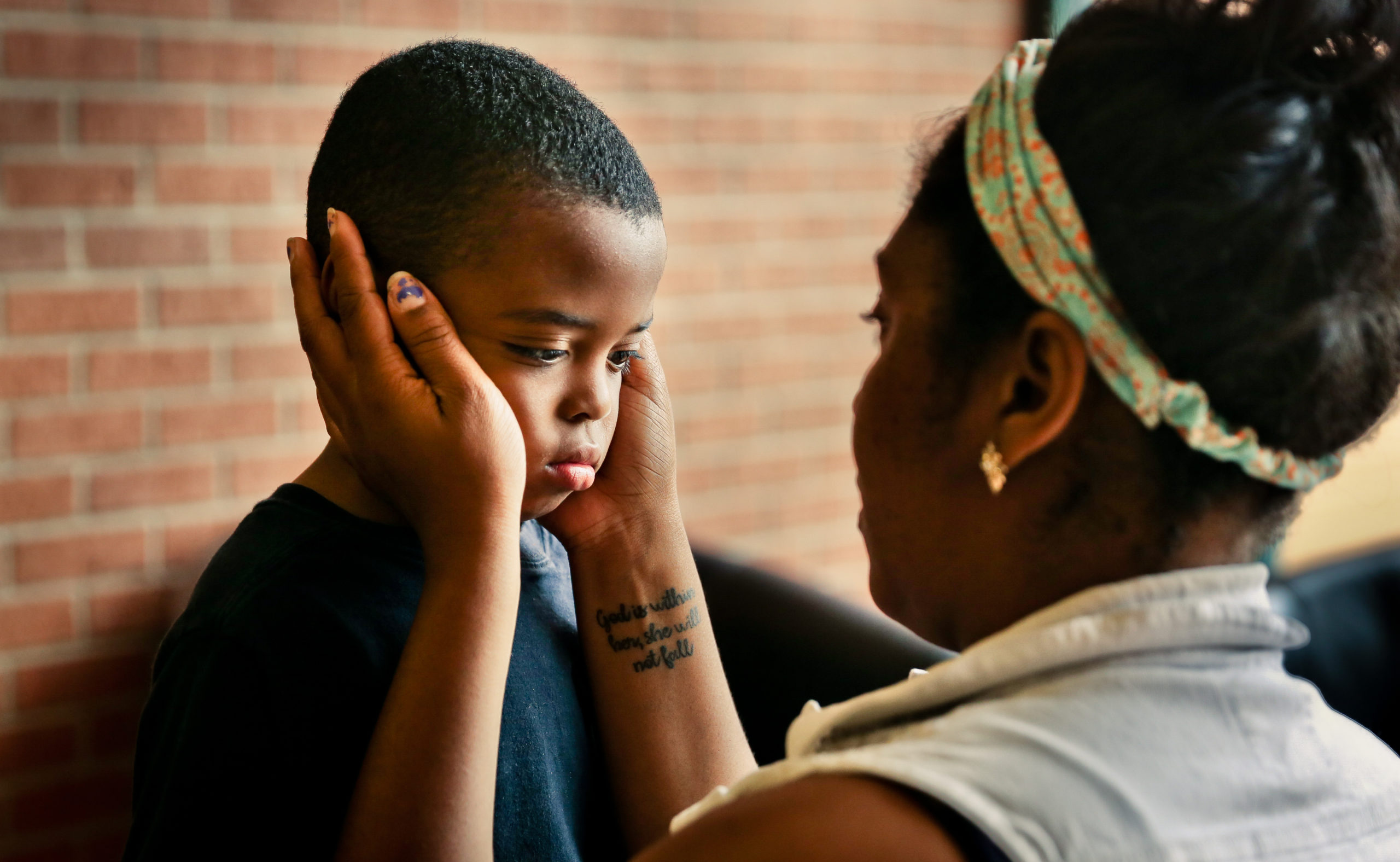
EYE: What were some of the challenges in making the documentary?
LINDSEY: Trust. Ben and I recognized that we were white, privileged journalists entering a high poverty, crime arena including a “failing school”. We had to be authentic.
We had to show diversity; we didn’t want to pity or sensationalize. We listened to the community who felt strongly about showing the grittiness.
Most schools don’t let you in to see what’s happening, much less a big project without an escort. But Mauri said, “You know, I would like to try this, but it’s not just up to me. It’s up to every single staff person in our building.”
Jane Helmke, our news director, agreed because she said that as a white woman and as a news director, she had been at the station about 30 years and she felt like she had many opportunities in her lifetime to confront and combat racism in our community and she hadn’t done enough. She was totally on board when we said Mauri would “tell” the story.
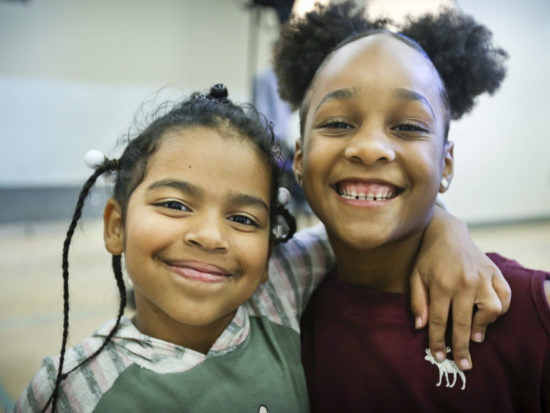
EYE: Were there any surprises in your filming?
LINDSEY: I think I knew this as a mother and a parent, but just how quickly the kids opened up to us, connected and were unfiltered. Kids are just such great truth tellers. They see right through you, right?
Mauri’s announcement every day is “You are the brightest, most intelligent, definitely best looking in all of North Minneapolis and you are worth the cost.”
They stand straight, heads are high, shoulders are square, chests are out. They have been told that they are worthy and they believe it.
I surprised myself also. Some of my own stereotypes, my own expectations of what I thought an urban education was and where you can get a good high quality education were upended.
I think I had been somehow conditioned to believe that the school would look different, feel different, feel scarier, feel more sorrowful or sad in that lens of pity. And Lucy Laney was anything but.
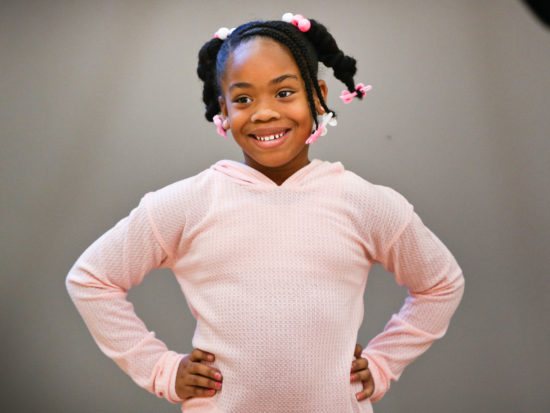
EYE: It ends in a less-than-fairytale way. How did you handle that?
LINDSEY: We let the story sort of take shape throughout the year. They thought they finally got off the list of failing schools. It was a big celebration. And we thought, well, gosh, there’s our story, there’s our triumphant end, hooray for education. And so we felt really satisfied.
This is the perfect ending for a little school that could, and did. And then two weeks later, we got a text from the Principal saying you might want to come over to the school. It was all a big mistake. And we thought, no, no, no, no, no, no, this can’t be.
We felt so terrible for the school and our documentary was ruined. Who wants to watch a story about that? We ran over to the school and people were crying. We taped a little bit.
After some time, we realized perhaps it was meant to be because we could all have a broader impact. It was the impetus for a broader conversation about standardized testing and measuring children because everything you see inside that school is far from failing.
EYE: What do you hope audiences take away?
LINDSEY: What we’ve realized as we’ve taken Love Them First around the country is that it’s not a North Minneapolis story or a Minnesota story, it’s an American story and an American struggle in education. How can we all work for the collective good of all of our children?
And I really would love people to think more deeply about standardized testing and how we measure our children. What is within our reach, our realm to make a difference for children by looking through the lens of love?
Mauri’s approach of radical love is something she’s quick to say is not like touchy, lovey-love. It’s love with high expectations and challenging love.
EYE: That title grabs your attention and pulls you in. Was that an automatic choice for you and Ben?
LINDSEY: We didn’t know what to call this the movie for a long time. I always felt very strongly that whatever we named it, there should be “love” in the title. But we had some on the team, a few documentary consultants and even Mauri, who weren’t so sure about Love Them First as a title.
Mauri felt like people would misinterpret that. It’s like, “Oh, you just love the kids and everything’s gonna be okay. And it’s not a warm, fuzzy love. It’s like the high expectations kind of love.”
I like the reason I chose it, because I feel like it’s actionable. Plus, those are Mauri’s own words, and I felt like it was a call to the world.
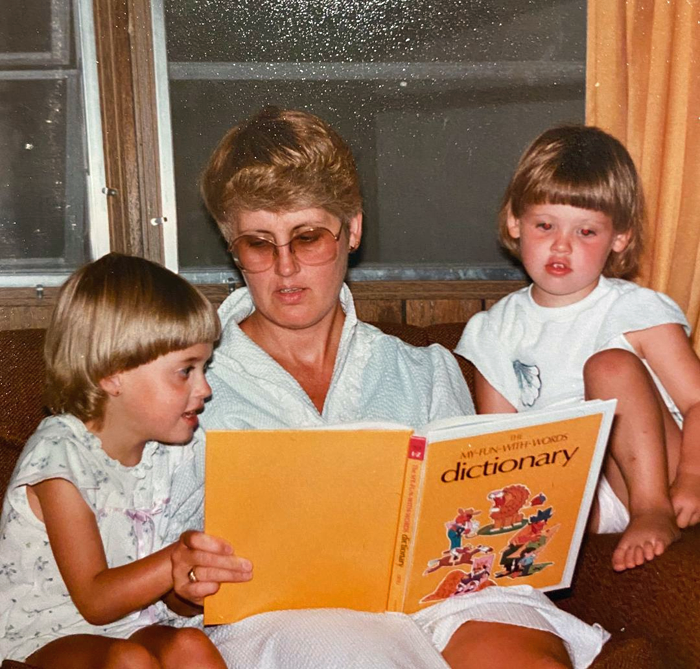
EYE: You’ve been a reporter for 19 years. What drew you to journalism?
LINDSEY: Going back to my childhood, I’ve always been drawn to stories about the underdog. I was a pretty awkward child. I had crossed eyes and lots of eye surgeries and thick glasses, really quiet, shy and introverted. So writing was always my outlet.
Also, my parents were teachers and really encouraged a love of reading, writing and public service. I would set up a table in my living room every weekend with Jessica Savitch, the first woman to anchor a weekend newscast, and read along stories with her and make my dog watch me! In college I ended up going more into print because I thought, well, television could never be for me.
But, after a summer internship with CNN in Washington, D.C., that changed. I was just hooked. I am a really visual thinker. I believed in the power of telling people’s stories. I felt like I was doing a service. And that courses through my veins, giving me the wherewithal and the perseverance to keep going day after day.
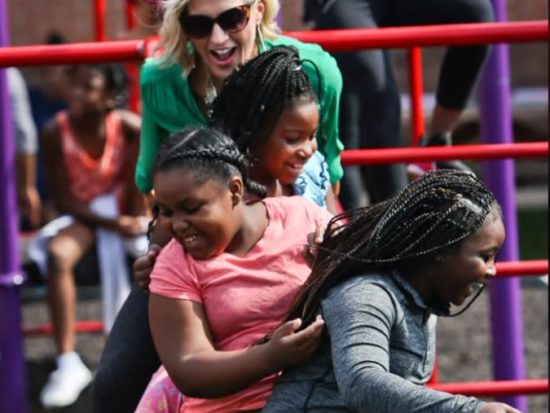
EYE: What kind of advice do you have for up-and-coming journalists?
LINDSEY: We need more voices in this industry now more than ever. Follow your passions! Journalists need to bring to light the narratives that are absent and give voice to the voiceless. Also, trust your own instincts, which are more far more powerful than you ever realize.
In doing this documentary, we ran into a lot of doubt on all sides: the community, the school, the district, even within our own organization. There was just something inside me that I just knew. And I have this quiet strength about me.
I wasn’t going to shake my fist and raise a ruckus. But I navigated around a lot of barriers by following my own convictions.
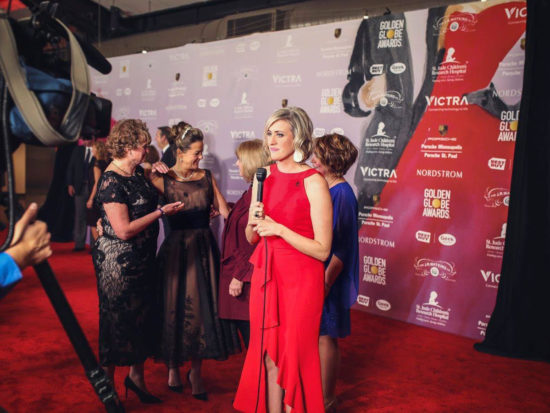
EYE: So Mauri and the kids have had a big personal impact on you?
LINDSEY: I was attracted to Mauri’s leadership and story because I, too, want to do my part to change the world. And while I can’t fix the educational system or the violence in North Minneapolis, the greatest weapons I have are my words, my story and my heart.
One girl in the film said: “You just got to hope. You can always find light in the darkest of places.” Building understanding and empathy is probably one of the greatest gifts that have come out of the film.
EYE: What is next for you?
LINDSEY: I think about what stories help us understand the world that we currently live in versus the world that we want to live in. I’m looking for stories that create and spark empathy, stories that help people uncover their own biases and assumptions, the stories that would take us on a journey of the world that we want to create for our children and future generations.
I’ve been thinking a lot about how can I build relationships with the keepers of those stories and the people who tell them.
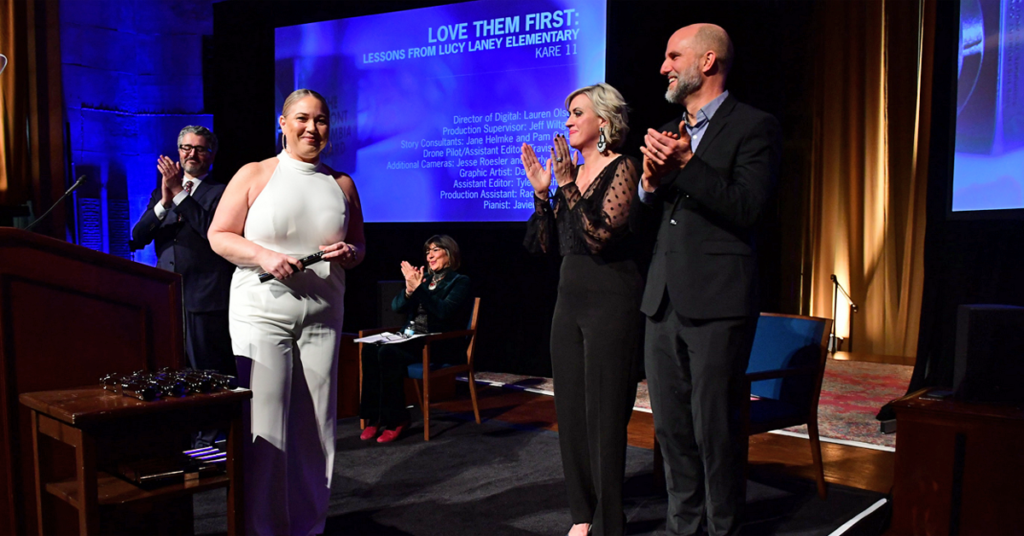
EYE: Thank you, Lindsey, for your time and your insights! Congratulations to you and Ben for being 2020 Alfred I. du-Pont Columbia Award winners as well. Love Them First is a must see for every community! Continued success to you as you go forward.
Watch the Love Them First documentary:
Lindsey Seavert Photo: KARE11
WEBSITE: www.lovethemfirst seavertstudios.com
TWITTER: @LindSeavert
FACEBOOK: @lseavert
INSTAGRAM: @lseavert
If you liked this, you might be interested in our interview with Stacey Reiss, producer of the award-winning film, The Eagle Huntress, and her HBO documentary on prison reform, It’s a Hard Truth Ain’t It?
###

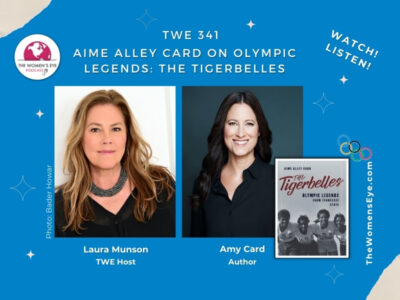
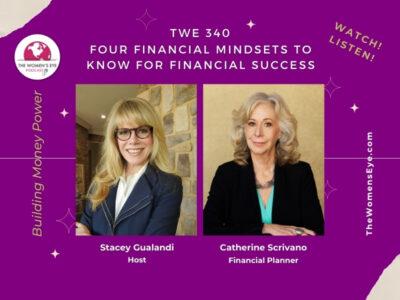
Leave a Reply